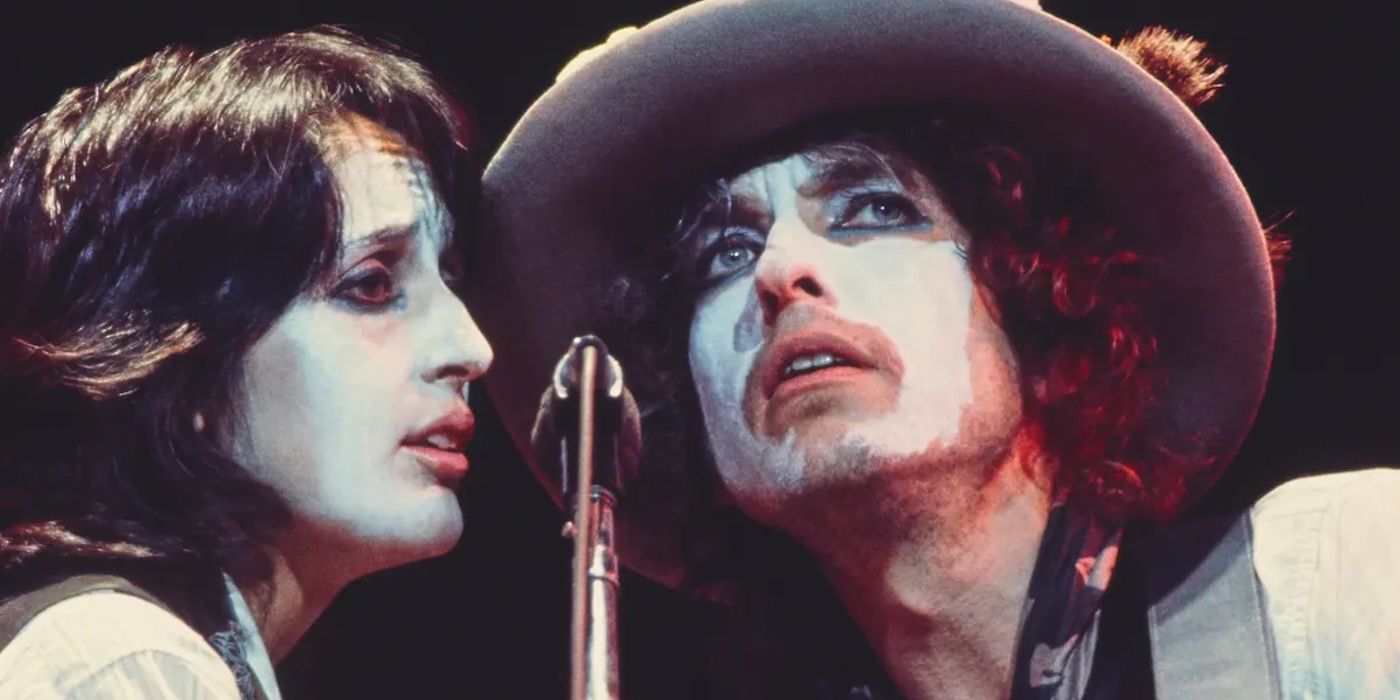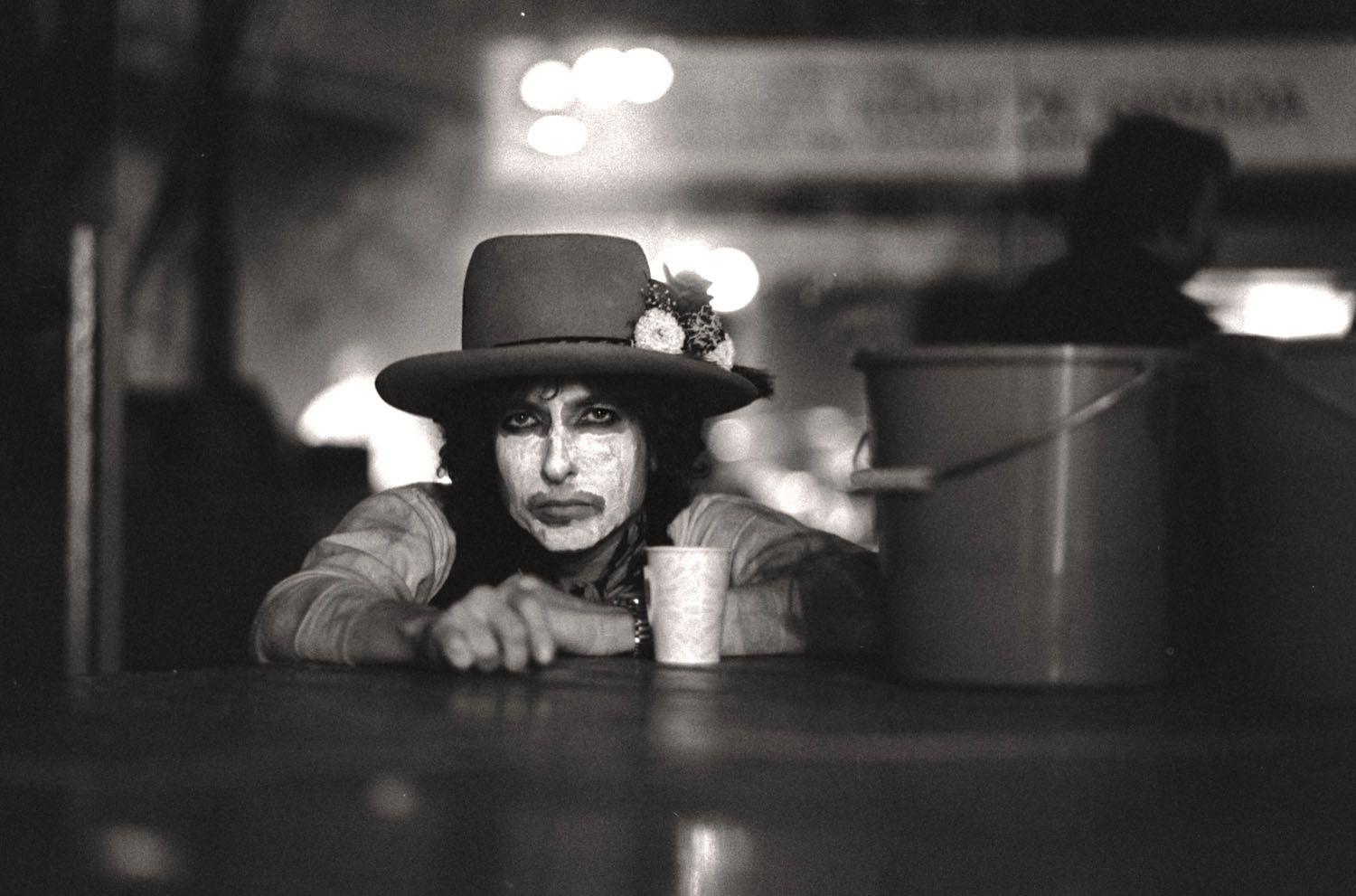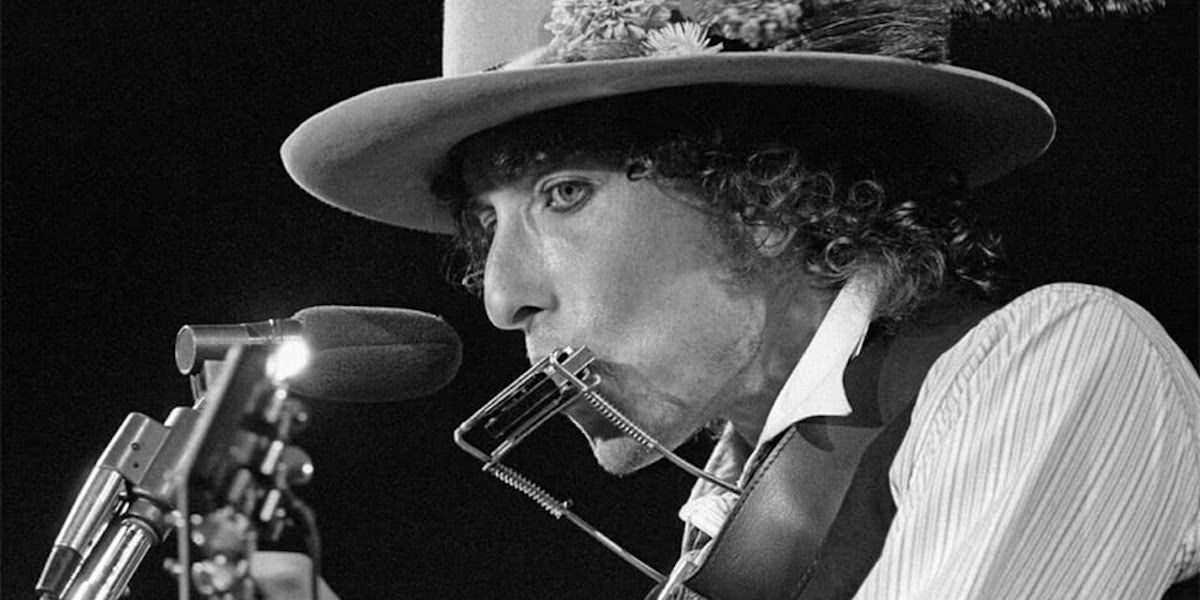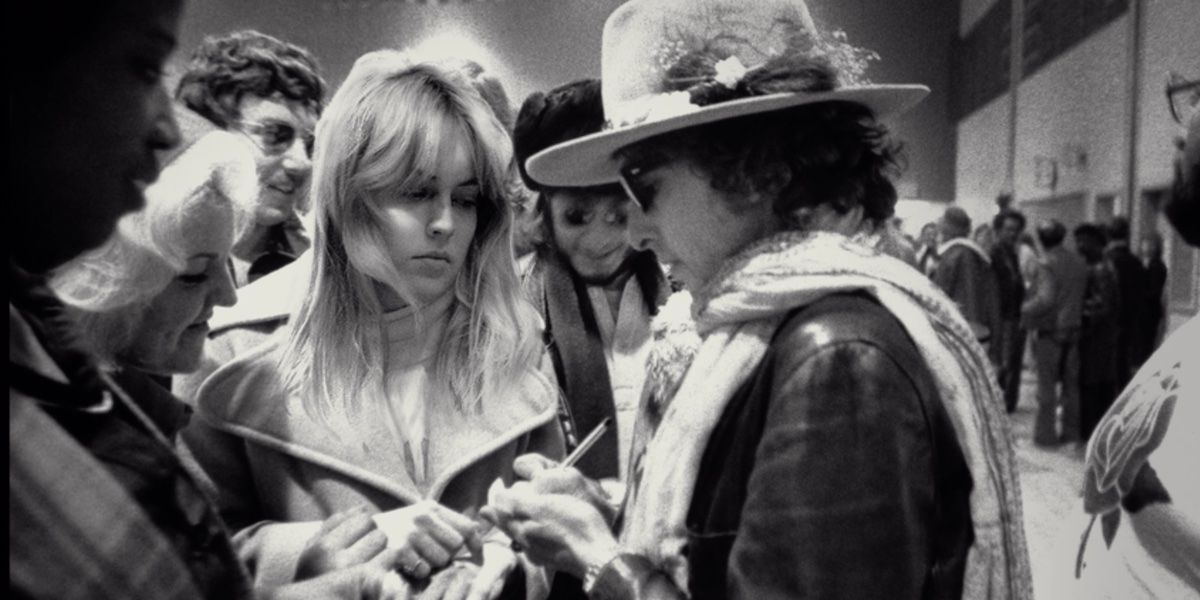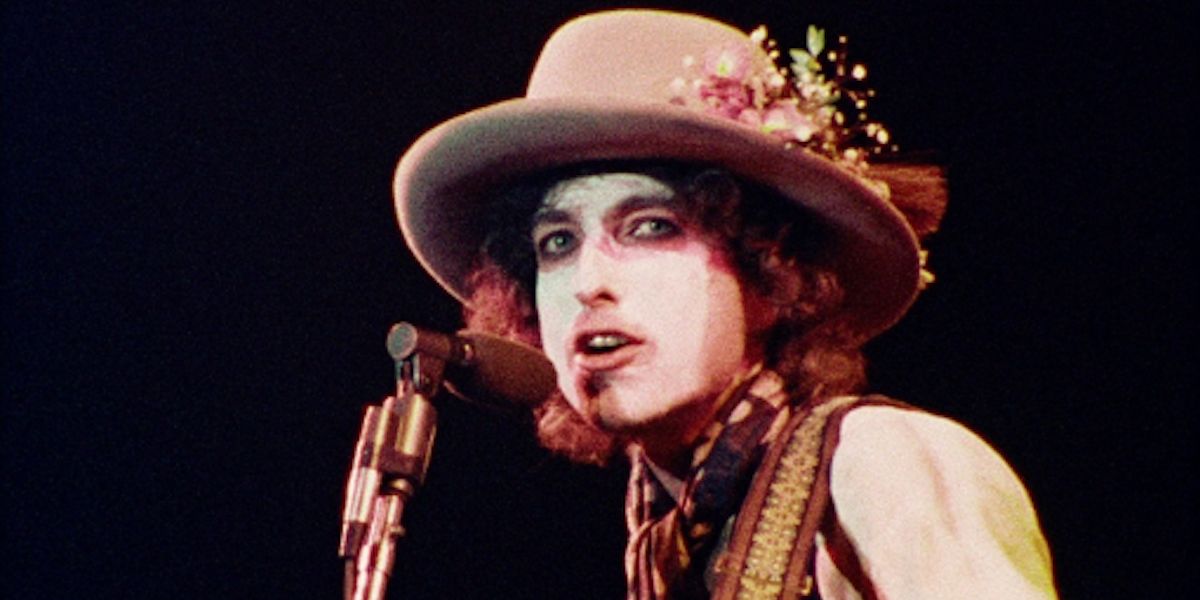The concert film has a long history. Its earliest known iteration dates to 1948 with the seminal Concert Magic, focused on the violinist Yehudi Menuhin, and in the following decades it has evolved into a rite of passage that all great musicians must eventually attempt. When constructed with enough care the results can be breathtaking, with classics such as Talking Heads’ Stop Making Sense or Pink Floyd’s Live at Pompeii serving as crucial records of an artist at their peak, while also allowing viewers to experience an event they are now unable to see live. But, as with all genres, repetition and cliché begin to reign supreme, with most concert films happy to continue the precedent set by its architects while adding nothing to the format. And while the idiom ‘if it ain’t broke don’t fix it’ still holds some water, even the most efficient of formulas need a much-needed burst of energy on occasion.
Enter Rolling Thunder Revue: A Bob Dylan Story by Martin Scorsese, a stunning reinvention of the concert film by legendary filmmaker Martin Scorsese as he documents the monumental Rolling Thunder Revue tour undertaken by Bob Dylan 44 years prior. It was a tour conducted in a time of much disarray, with the embarrassing defeat in Vietnam still lingering over the once proud nation’s head and the aftermath of the Watergate scandal having done irreversible damage to its government. Amidst the hardship, Dylan embarked on a tour that aimed to reignite the fire of that dwindling nation, or at least remind it of what had sparked the first embers to begin with. While the film wears the clothes of a standard concert film, mixing archive footage with newly shot interviews featuring many of its key players, Dylan and Scorsese are never ones to do something the traditional way, with its innocent façade hiding a glorious magic trick of an experience. Despite appearing to be a factual documentary, much of its contents are entirely fictional. Many of its interviewees are merely actors, forcing themselves into this pivotal moment in history when in reality they were a million miles from it. Crucially, the film never differentiates between fact and fiction, with even Dylan himself referring to these fictitious creations as if they’d really happened. It is possible (and indeed quite likely) that those not well-versed in the tour will take everything at face value, and the revelation that much of it is complete rubbish could feel like a betrayal from two of America’s greatest living artists. But Rolling Thunder Revue is not intended to be a malicious trick, but rather a stunning reinvention of what a concert film can be without ever getting too lost in its own style as to distract from the reason anyone would watch a film like this: the music. It’s a trickster’s paradise, and one that only a filmmaker with the talent of Scorsese could pull off while still feeling sincere rather than nefarious, and the result is one of the greatest films in the history of the genre.
Bob Dylan is no stranger to documentaries. The 1967 film Dont Look Back by D. A. Pennebaker is widely considered a classic of the genre, and provided an enlightening behind-the-scenes look at the young poet while he was at the height of his success. It’s an unflinchingly honest look too, with Dylan often appearing as an unlikeable egotist who barely registers anyone outside of his own arrogant viewpoint, but the artistry with which he constructs his music makes for a mesmerizing watch. While many films have tried to claim Dont Look Back’s crown as the definitive Bob Dylan documentary, only 2005’s No Direction Home had proved itself as a genuine competitor. The film, also directed by Scorsese, chronicles Dylan’s rise from humble folk singer to major cultural icon throughout the 1960s, with its extensive four-hour running time ensuring plenty of ground is covered. Both films seek to uncover the real Dylan hidden behind the fame and accolades, and while they do shed some light on this question, there’s also a feeling that Dylan is even more mystical by the time their credits roll. It’s an attitude that fits the legendary songwriter like a glove, and one that Rolling Thunder Revue takes to dazzling new heights.
The opening minutes of Rolling Thunder Revue set the tone perfectly. We begin with modern-day Dylan (in his first onscreen interview for over a decade) discussing the meaning and impact of the tour while a collection of archival footage rolls across the screen. It’s the standard opening for a film like this, and one that Scorsese is quick to end. After a few moments the music cuts out, and Dylan breaks from his philosophizing tone to adopt a more casual mood. Rolling Thunder was over forty years ago, he exclaims. He doesn’t remember a thing about it, let alone its deeper meaning. “I wasn’t even born” he concludes with, a line that lays the groundwork for everything to come.
What follows is a trip down memory lane with all the false recollections that forty years of aging would do to someone. Interviews with prominent figures of the tour comprise the bulk of the material, with names including: Joan Baez, Sam Shepard, Rubin “Hurricane” Carter, Allen Ginsberg, and obviously Dylan himself. Footage of the tour comes from outtakes of the film Renaldo and Clara, a bizarre half-documentary, half-dramatic film that served as the second (and last) foray for Dylan into the world of directing. Only Rolling Thunder Revue disagrees, with a European filmmaker called Stefan Van Dorp claiming to be the creator of this footage. He’s the first of many additions Scorsese makes to the tour, which also includes Sharon Stone as a fictionized version of herself and Michael Murphy as Rep. Jack Tanner, a character he’d previously played in Robert Altman’s classical mockumentary miniseries Tanner ’88. Aiding these claims are mocked up photographs to maintain the illusion, in addition to Dylan mentioning them in his otherwise truthful interviews. Despite the playful nature of these additions, many of them serve as radical diverts from reality that would have completely changed the tour’s legacy had they been true. Dylan’s decision to paint his face stark white is one of the most debated aspects of the tour, but Stone’s claim that it comes from the rock band Kiss after Dylan once spotted her in a Gene Simmons jumper gives a rather unadventurous answer to the decades-long question. Similarly, Tanner’s claim that he persuaded Jimmy Carter to intervene on behalf of wrongfully convicted boxer Rubin Carter after witnessing Dylan perform his historic protest song “Hurricane” provides a whole new perspective on one of the songwriter’s crowning achievements.
Except none of these are true, which leads directly into the overarching question of the film. Why would Scorsese choose to structure his film this way? It’s a decision that could have easily worked against the project, overshadowing any attempt to celebrate the renowned tour with narcissistic nonsense. As with everything involving Dylan, there’s no simple answer, if there even is one (Dylan never being above poking fun at his most ardent of fans), but there are two interpretations that stand out the most.
The first is that the film is one large examination into the power of memory, or more specifically, how our own personal memory can begin to veer closer to fiction the further we age. It’s an unfortunate reality that people grow old, and it’s hardly uncommon to reminisce on memories that originated years or even decades earlier with full confidence of your own mind, only to realize you were misremembering when hard evidence arrives to miscredit you. It’s a sad truth that Rolling Thunder Revue explores in a subtle but also tragic way. The Bob Dylan being interviewed is almost half a century older than the freewheeling protest singer who dominates the archival footage, so it’s forgivable that he may not remember everything with pinpoint accuracy. This also explains why the film never draws attention to its own artifice, as though Scorsese would rather let Dylan bask in his own specious memories as opposed to portraying him as a silly old man who can’t even remember his own past. It’s an approach that presents the tour through a half-remembered haze, where emotions take precedence over minor (and insignificant) details, and where the viewer stands shoulder-to-shoulder with Dylan as they journey back through the walls of time.
The second is a far grander ambition, one that aims to recreate the landscape that birthed the Rolling Thunder tour so that a modern audience can understand the mindset of Dylan and his band of vagabond musicians circa 1975. America in the 1970s was not its proudest moment, a nation ripped apart by social unrest and a public drubbing on the world stage that had cost them much of their red, white, and blue pride. Trust in its leaders was at an all-time low, and whatever purpose the Founding Fathers had built America on appeared to have been lost in the turmoil. It was in this chaos that Dylan embarked on the tour, hoping to rediscover whatever it was everyone was searching for. It was a tour overflowing with mysteries, with even its name being the subject of much debate (a reference to either the chief of the Iroquois people living on the Tuscarora Reservation, or the government’s bombing campaign in Vietnam being two contenders). It’s appropriate that the film it would later inspire would only add to its now mythical tone. Why would Scorsese, one of the most respected filmmakers in all of cinema, deliberately hide the truth behind a pleasant veneer of lies and falsehoods. Why would the American government do exactly the same thing 44 years earlier? It’s a cautionary tale to never blindly trust your leaders, no matter how trustworthy they appear, with Scorsese being the perfect cipher to reinforce this bitter truth so many decades on.
But despite all his ambitions, Scorsese never forgets what Rolling Thunder Revue is all about – a celebration of Bob Dylan. The extended sections that consist solely of him performing one of his signature songs, or the behind-the-scenes footage that provides a fascinating insight into how the tour was created, ensures there is plenty to enjoy for those looking for a more traditional documentary. Even with the bogus additions, the bulk of the material is still factual, providing ample information for those who seek it. The fictional elements are certainly an integral part of the experience, but they also form only a small part of the runtime as to not distract from the overall experience. But it’s impressive how much these minor changes can recontextualize the entire film, and the revelation that sections of it are false demanding the film receives a rewatch from those who were pulled into its bewitching lie the first time around. What Scorsese has done is remake the Rolling Thunder tour in a different medium whilst ensuring all the themes and goals from its previous iteration remain intact, reenergizing the tour for a new generation while also serving as a fascinating revamp of the concert film genre.
If Dylan had chosen film as his passion rather than music, it’s likely the 34-year-old artist, entangled in the hardships of 1975 America, would have made something very close to this. With Rolling Thunder Revue, Scorsese has shown a greater understanding of Dylan than even the most fanatic of his supporters have exhibited, and when combined with his already brilliant No Direction Home, cements him as the elusive songwriter’s greatest biographer.

